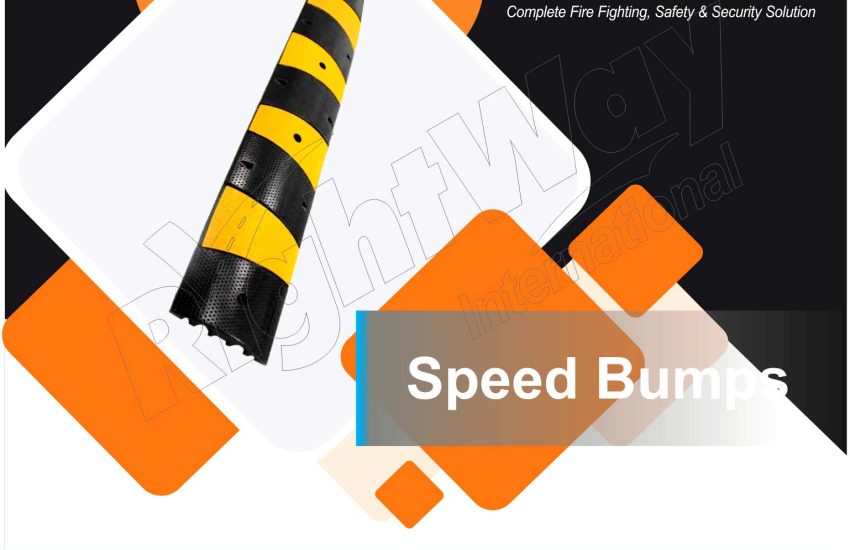Speed Bumps are widely used in traffic management to control vehicle speeds and enhance safety. From quiet neighborhoods to busy parking lots, speed bump help reduce speeding, protect pedestrians, and improve traffic flow. This article outlines the purpose, types, benefits, and best practices for using speed bump effectively.
What Are Speed Bump ?
Speed bumps are raised sections of road designed to slow down vehicles. You’ll often find them in residential streets, school zones, parking areas, and private driveways. Typically constructed from asphalt, rubber, or concrete, speed bump vary in height, width, and design to suit different traffic conditions.
Functions of Speed Bumps
1. Speed Reduction
Speed bump create a physical barrier that forces drivers to slow down. This speed control is critical in areas where high-speed driving could endanger pedestrians or cause accidents.
2. Pedestrian Safety
Slower vehicle speeds provide pedestrians with a safer environment, especially in zones with heavy foot traffic like schools, parks, or shopping centers.
3. Traffic Calming
Speed bump contribute to overall traffic calming by discouraging aggressive driving and encouraging cautious behavior behind the wheel.
4. Accident Prevention
By slowing vehicles and increasing driver awareness, speed bump reduce the risk of accidents and lessen the severity of collisions.
Types of Speed Bumps
Traditional Speed Bumps
These are high (3–4 inches) and short (12–15 feet), creating a pronounced jolt that slows vehicles significantly. They’re ideal for private roads or low-speed areas.
Speed Humps
Lower and wider than traditional bump, speed humps (2–3 inches high, 12–14 feet long) provide a smoother ride while still reducing speed. They’re commonly used in residential zones.
Speed Cushions
Designed for selective slowing, speed cushions consist of spaced-out sections. Cars must slow down, but wider emergency vehicles can straddle the gaps and maintain speed.
Speed Tables
These long, flat-topped bump offer gentle speed reduction and are effective in areas like crosswalks or high-traffic residential zones. They also accommodate buses and emergency vehicles better.
Rubber Speed Bumps
Made from molded rubber, these are portable and easy to install. They work well in temporary or seasonal setups such as event venues or construction zones.
Benefits of Speed Bumps
Enhanced Safety
Speed bumps lower accident risk by encouraging drivers to maintain safe speeds. They protect both vehicle occupants and pedestrians.
Better Traffic Flow
In areas prone to reckless driving, speed bumps help smooth out traffic flow by discouraging sudden acceleration and weaving.
Cost-Effective Control
Compared to traffic lights or surveillance systems, speed bumps offer a low-cost method for controlling speed and reducing accidents.
Increased Driver Awareness
Visible bumps remind drivers to slow down, which reinforces speed limit compliance and creates a culture of safer driving.
Best Practices for Installing Speed Bumps
Strategic Placement
Place speed bump in problem areas where speeding poses a risk—such as near schools, playgrounds, or sharp turns. Avoid locations where they could interfere with emergency access or create backups.
Appropriate Design
Select the right type of bump based on local traffic volume and road conditions. Factors such as vehicle type, speed limit, and road width should influence the design.
Clear Signage
Use reflective signs and pavement markings to warn drivers of approaching speed bump. Good signage reduces sudden braking and rear-end collisions.
Routine Maintenance
Inspect bumps regularly for wear, cracks, or fading paint. Prompt repairs ensure effectiveness and prevent driver complaints.
Community Engagement
Consult local residents and businesses before installing speed bump. Their feedback helps ensure community support and prevents pushback.
Conclusion
Speed bump offer a simple yet effective solution for reducing speed, protecting pedestrians, and improving road safety. By choosing the right type, placing them strategically, and maintaining them properly, communities can control traffic and reduce accidents affordably. With careful planning and public involvement, speed bump can become a valuable part of a comprehensive traffic calming strategy.


